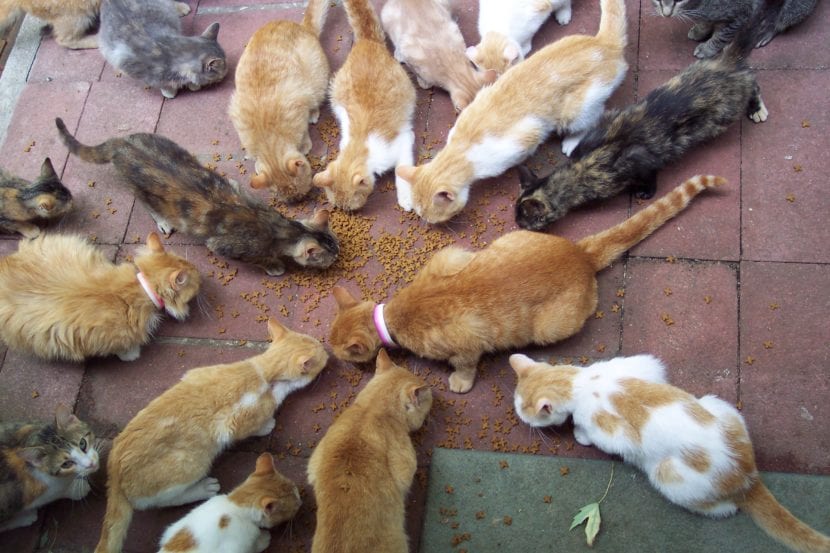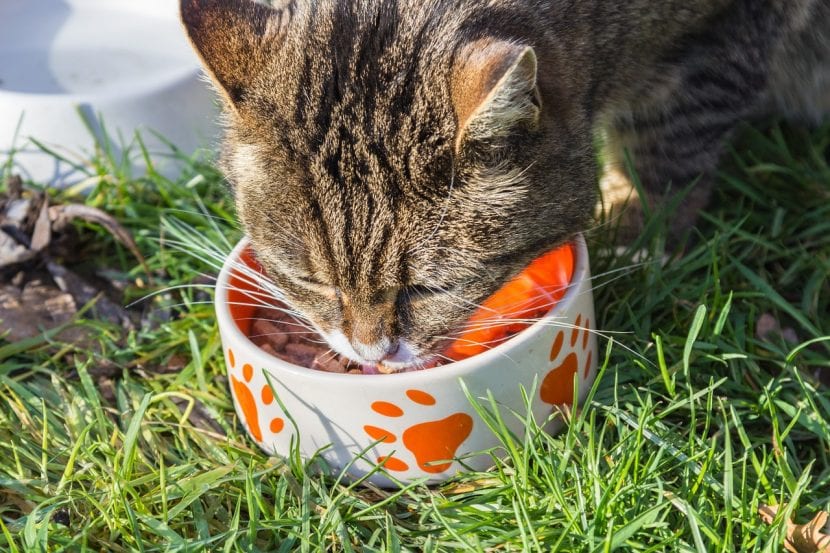
Cats that live on the street or in the garden, although each one of them has their own personality, it is normal that they end up living together and that they even share their plate with others. But it is very important that we take good care of them, because once we decide to take responsibility for their well-being, we are agreeing to take care of them always.
For this reason it is necessary to know how to feed a colony of catsWell, although it seems very easy in reality it is not so easy, and less so if we decide to give them wet food.
Choose to give them dry feed
Whether we have cats in the garden or if we are caregivers of the cats of a street colony it is advisable to give them dry feed, since in case the animals leave traces on the ground they can be easily cleaned. Cleaning them prevents other animals from going, such as ants, which we all know that when they gather in large numbers can be a nuisance.
Another point in favor of dry feed is that, in the case of cats that are in our garden, we can always leave them the feeder full of food so that they can fill themselves whenever they need it.
Take them to eat several times a day
Cats eat 4-6 times a day. For this reason, and whenever we can afford it, we will take them at least 3, or two but bringing plenty of nutritious food, like kittens. Being outside they move and exercise, so they burn all the energy they accumulate, hence we can give them feed for kittens without problems. Yes indeed, it is highly recommended that the food does not contain cereals or by-products so they can stay healthier.
And is that being carnivorous animals do not need cereals at all, much less those by-products (beaks, eyes, skin, etc.). What's more, they can cause food allergies, in addition to other problems (cystitis, for example).
Bring a feeder to each

It is the ideal. Cats are very territorial, and unless we know they all get along already, the best we can do is bring a feeder to each one so that there are no conflicts over food. Later, when they are all known and tolerated, we can fill the large feeders so that they themselves get used to eating together.
I hope these tips are useful to you 🙂.